In this NewsFlash, we find out how to detect the brain activity when you see a familiar face and why genetically modified crops may boost bug populations. Also, we discover the chemicals that make mice scared stiff if they smell a predator, and hear how to create hair cells, essential for hearing, in the lab. Plus, how Tibetans living at altitude have developed different genes to their lowland neighbours!
In this episode
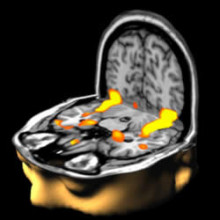
00:19 - Brain scans to recognise facial recognition
Brain scans to recognise facial recognition
This week a group of researchers from California have been able to spot the moment at which your brain recognises a face. They've done this using the brain scanning technology known as fMRI - or functional magnetic resonance imaging.
The team, led by Jesse Rissman, had their test subjects look at hundreds of faces from an image database. They were then shown a new set of faces, some of which had appeared in the database. As the subjects looked at each of these new pictures the researchers scanned their brains to see if anything happened.
 When the subjects did recognise a face there was an identifiable pattern of neural activity in their brains. According to the journal PNAS, where this was published, the team used software to recognise this pattern as there were quite a few neurons to consider. They found that this so-called 'neural signature' when a brain recognises a face was consistent across all the test subjects. So it's likely that whenever any of use recognises a face, the same bits of our brain 'light up'.
When the subjects did recognise a face there was an identifiable pattern of neural activity in their brains. According to the journal PNAS, where this was published, the team used software to recognise this pattern as there were quite a few neurons to consider. They found that this so-called 'neural signature' when a brain recognises a face was consistent across all the test subjects. So it's likely that whenever any of use recognises a face, the same bits of our brain 'light up'.
There was one problem, however, in that sometimes the test subjects recognised a face even when they hadn't seen it before. Their brain activity was the same as with a genuine recognition so if you wanted to take an fMRI of someone examining a police line-up it wouldn't be able to rule out any false-positives. The scanning software can tell you if someone believes they recognise a face but one of the key findings here is that the researchers have been able to pinpoint what happens when memories are triggered.
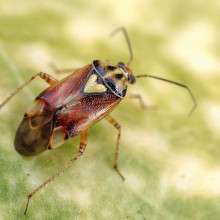
03:03 - GM boosts bug populations
GM boosts bug populations
Scientists have found that cultivating pest-resistant GM crop strains can paradoxically create a whole new breed of bugs!
Writing in Science, Beijing-based researcher Yanhui Lu and colleagues show that after ten years of growing GM cotton in northern China, a previously low-level pest, called the mirid bug, has now risen to prominence and become a serious problem.
The cotton plants in question have been engineered to produce a toxin made by the bacterium Bacillus thuringiensis (Bt), which kills off susceptible pests that try to devour the cotton plants, including one notorious nuisance, the cotton bollworm, Helicoverpa armigera.
In China, the modified plants account for over 95% of the cotton grown. This has, in turn, translated into a dramatic reduction in pesticide use, but therein lies a problem.
Prior to the introduction of GM Bt cotton, farmers sprayed regularly against bollworm, which also had the effect of killing off other low-level pests like mirid bugs. But with the introduction of the GM cotton strain, and the cessation of spraying, the researchers found that the mirid bugs, which are actually not affected by the Bt toxin, have increased their numbers dramatically.
But more significantly, they don't remain confined to the cotton field. Being fairly unfussy eaters, they also spread to and infest other local crop species nearby.
This shows, say the scientists, that "area-wide cultivation of transgenic crops may bring various (direct and indirect) effects on ecological status of different organisms, which should be assessed or anticipated in a comprehensive fashion."
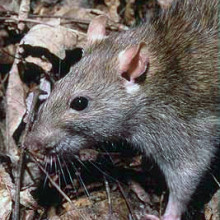
06:07 - Why mice don’t smell the fear but fear the smell...
Why mice don’t smell the fear but fear the smell...
Researchers have found the chemicals that make mice scared stiff if they smell a predator, such as a cat, rat or snake.
Publishing in the Journal Cell, a team from California wanted to know what it was about these predators that caused stress hormone levels in mice to rise and why they'd flatten themselves against the floor - even if the predator wasn't visible.
 Lisa Stowers and colleagues discovered that the trigger was a group of proteins, found in urine, known as MUPs (major urinary proteins). These are secreted by just about every vertebrate on the planet but they are very species-specific. And one section of the mouse's nose is very sensitive to these proteins.
Lisa Stowers and colleagues discovered that the trigger was a group of proteins, found in urine, known as MUPs (major urinary proteins). These are secreted by just about every vertebrate on the planet but they are very species-specific. And one section of the mouse's nose is very sensitive to these proteins.
The researchers already knew that the mouse vomeronasal organ could pick up pheromones from other mice but the idea that they were sensitive to those of other mammals is new. In their tests they placed mice which had an inactive vomeronasal organ close to an anaesthetised rat (so it wasn't going to eat them!). And because the mice couldn't smell any of these MUPs they showed no signs of fear. One even curled up and went to sleep next to the rat. So it shows that the visual spectacle of a rat on its own doesn't play a part in predator recognition.
The fear of cat, rat and snake smell must therefore be hardwired, since these mice have been bred in labs for nearly eighty years and very few would have met Mr Tibbles in that time.
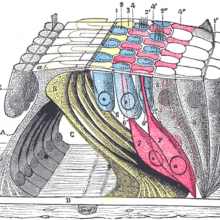
08:30 - Now hear this: scientists make new hair cells
Now hear this: scientists make new hair cells
Scientists have discovered how to coax stem cells to become hair cells, the structures that turn soundwaves into brainwaves in the inner ear.
Stanford researcher Stefan Heller and his colleagues, writing in Cell, first converted mouse skin cells into stem cells by adding four genes, Oct4, Sox2, Klf4, and cMyc. The resulting cells were then exposed to a host of different growth factors to chemically fool them into believing they were in certain parts of a developing embryo. This encouraged the cells to specialise or differentiate in a highly specific way. Finally the cells were grown next to a different batch cells taken from the inner ear region of a chicken, which pursuaded them to turn into fully-fledged hair cells that were mechanically sensitive in the same way as their genuine counterparts.
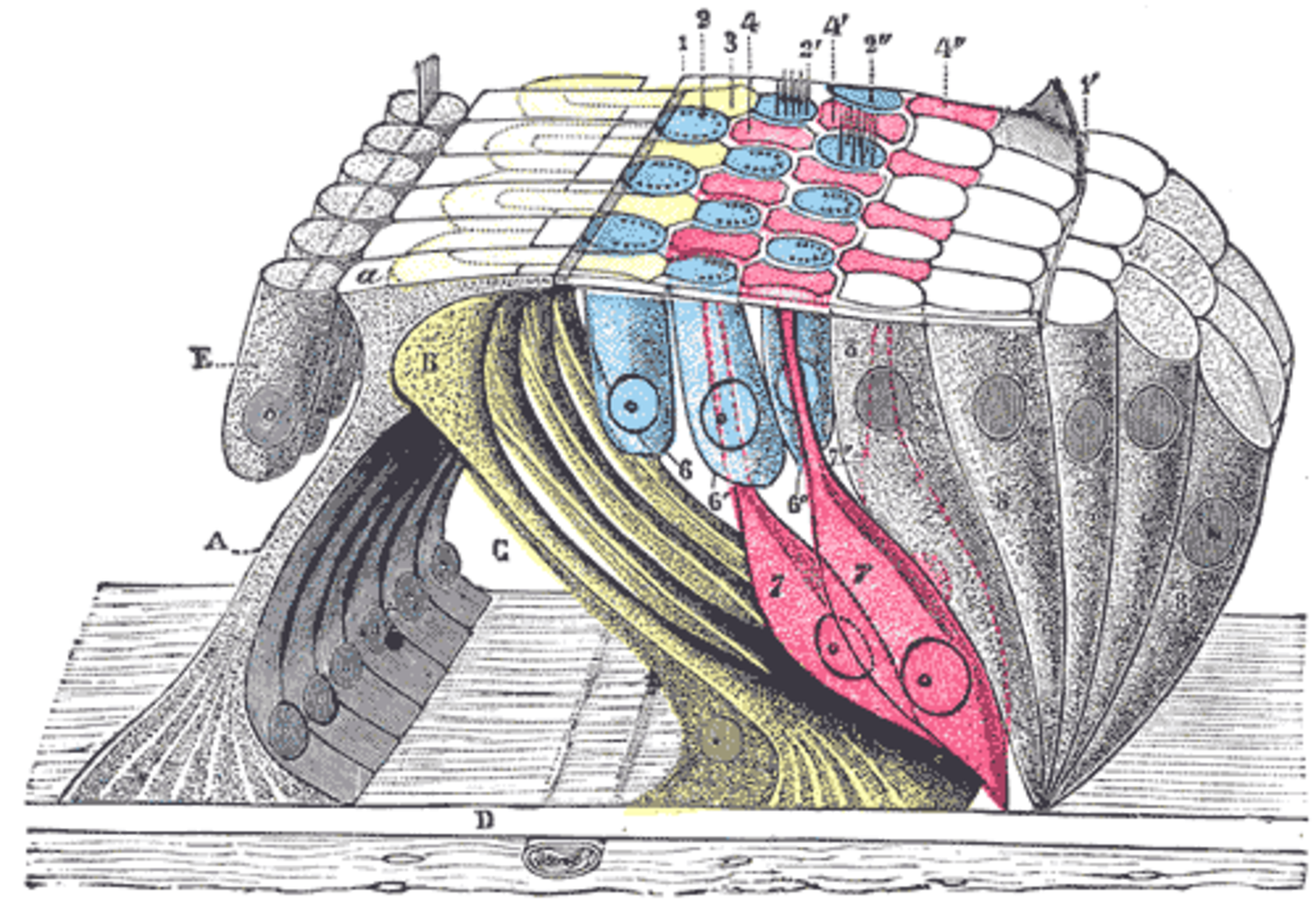 These cells, of which there are about 15,000 in each human ear, carry thin hair-like projections at one end of the cell. In the intact ear, these hairs, known as stereo cilia, vibrate in sympathy with soundwaves entering the inner ear to produce nerve signals that are transmitted to the brain's hearing areas.
These cells, of which there are about 15,000 in each human ear, carry thin hair-like projections at one end of the cell. In the intact ear, these hairs, known as stereo cilia, vibrate in sympathy with soundwaves entering the inner ear to produce nerve signals that are transmitted to the brain's hearing areas.
Unfortunately, the relative scarcity of these cells, coupled with the difficulty scientists have experienced in trying to grow them prior to now, means that they are only poorly understood.
Yet one person in three is set to develop hearing problems in later life as a direct result of the loss or dysfunction of these cells because humans and other mammals, unlike birds, can't regenerate the cells if they are lost or damaged.
But now, say the scientists, the ability to produce large numbers of them means that it will become much easier to study how these cells can be protected chemically from age or sound-related damage, and even how to replace them.
"Perhaps the most promising strategy for taking advantage of this new source for hair cells is high-throughput screening for drugs to awaken mammals' lost ability to regenerate hair cells in the way that other animals can," says Heller.

10:53 - Ten genes help Tibetans thrive over 10,000 feet
Ten genes help Tibetans thrive over 10,000 feet
Tatum Simonson, University of Utah
Chris - Also in the news this week, researchers have discovered why Tibetans who have a taste for the high life are much better able to tolerate the low oxygen conditions that you find at higher altitude, compared with their lowland living counterparts. It turns out that they carry at least ten unique genes that enable them to do it. To tell us more, from the University of Utah, is Tatum Simonson. Hi, Tatum.
Tatum - Hi.
Chris - If you could tell us first of all, what was the reason for doing this study? What were you aiming to find out?
Tatum - We were interested in identifying the genetic basis for high altitude adaptation, what's interesting is that several research groups have done an excellent job characterising sets of physiological traits that are unique to native high altitude inhabitants. These studies have suggested that populations have adapted to this extreme environment, but the genetic basis wasn't entirely known.
Chris - So in other words, by living at high altitudes for many generations, these individuals must've accrued some kind of genetic changes that made them much better adapted to living there than say, me.
Tatum - That's exactly right.
Chris - So, how do you approach that problem?
Tatum - It's only recently that we've been able to actually look at our genetic code, or DNA, and by looking at single changes in the DNA sequence, we can identify regions that have been subject to what we call natural selection - the idea being that these variants have been beneficial for some particular reason in a particular environmental setting, and have been passed on through the generations, and allowed individuals to survive.
Chris - The thing is there are three billion letters in the human genetic code. How do you home in on the bit that you think might be important in this instance?
Tatum - So what we used was an approach that looks at what we call Single Nucleotide Polymorphisms (SNPs) or tags across the entire genome and we identified blocks or regions of the genome that exhibit a certain signature. The signature that we see with natural selection is that basically, you have a whole region that's increased rapidly in the population. That leaves behind a certain sign that we can look at and compare it with the rest of the genome. It really stands out as a striking signal for us to then go in and analyse.
Chris - So in other words, if you take people who live at high altitude in Tibet and have done for many generations and you compare them with the rest of the world who don't live at those kind of altitudes, and you're looking for specific hot spots in their DNA that keeps cropping up time and time again in the Tibetans but not in other people. This points you towards thinking in that region of the genome, there must be some beneficial change that helps these people to survive where they do.
Tatum - That's exactly right and we were able to do that by comparing the Tibetans with publicly available information on both Japanese and on Chinese populations.
Chris - Those populations presumably being significant because they're going to be relatively closely related in terms of human ancestry to the people you're studying.
Tatum - Right.
Chris - So you can iron out a lot of other changes.
Tatum - Exactly and they've typically lived in lowland regions which is key for our study.
Chris - And when you did this, what did you find? Did you home in on some genes that you do think enable these people to survive where I would struggle?
Tatum - Yes, so as you mentioned, we have at least ten genes that we've identified and what's interesting is that two of those genes were actually correlated with a certain physiological trait which is unique to Tibetans. That is the fact that Tibetans exhibit haemoglobin concentration which is similar to somebody say, living in London - so somebody at or near sea level. Yet, they're all the way up at 4,000 metres. Any non-adapted individual would increase their haemoglobin to compensate for the oxygen-deprived environment. So, when we compared two of our selected regions of the genome to the haemoglobin levels we measured, we found that two of them actually are associated with this decreased haemoglobin level.
Chris - So, in other words, if I went up to a very high altitude, I would compensate for the low oxygen by increasing the amount of haemoglobin.
Tatum - Right.
Chris - This helps me to get more oxygen around my body but has negative consequences because my blood's going to become thicker, stickier, gloopier. Therefore, I'm more likely to have consequences like high blood pressure and heart attacks, and strokes.
Tatum - That's right. That's exactly right.
Chris - But the Tibetans don't?
Tatum - But the Tibetans don't, yes. This area definitely needs more research. We know that this isn't happening but it also could be a side effect of something else that's been advantageous and selected for - so that they don't need to increase their haemoglobin because they're already so efficient, perhaps through some other mutation.
Chris - And I guess, just to finish off, the benefit of doing this kind of work is that there are situations where people who don't live in Tibet above 4,000 metres nonetheless have very low levels of oxygen in the bloodstream; I'm thinking people who have lung problems, lung infections, blood clots on the lung, maybe their whole body is exposed to low oxygen because of drowning or carbon monoxide poisoning or something. Understanding therefore how people cope naturally in these environments might provide a clue as to how we develop medical therapies to help people who are acutely in that situation.
Tatum - Yes, that's exactly true. So, this information can definitely help researchers develop therapies or even drug targets for people who have various amounts of oxygen-deprived disease or that sort of a thing.
Chris - Is that where you're going next with this?
Tatum - We do. We do hope to go forward. The idea being if we understand why people do well then perhaps we can help those who aren't doing as well at high altitudes.
Chris - Including one or two climbers perhaps.
Tatum - Yes, that's true.
Chris - Tatum, thank you very much. That's Tatum Simonson. She's from the University of Utah and she's published that work this week in the journal Science.
Related Content
- Previous Australian Archaeology and Rabbit Warrens
- Next Synthetic Biology










Comments
Add a comment